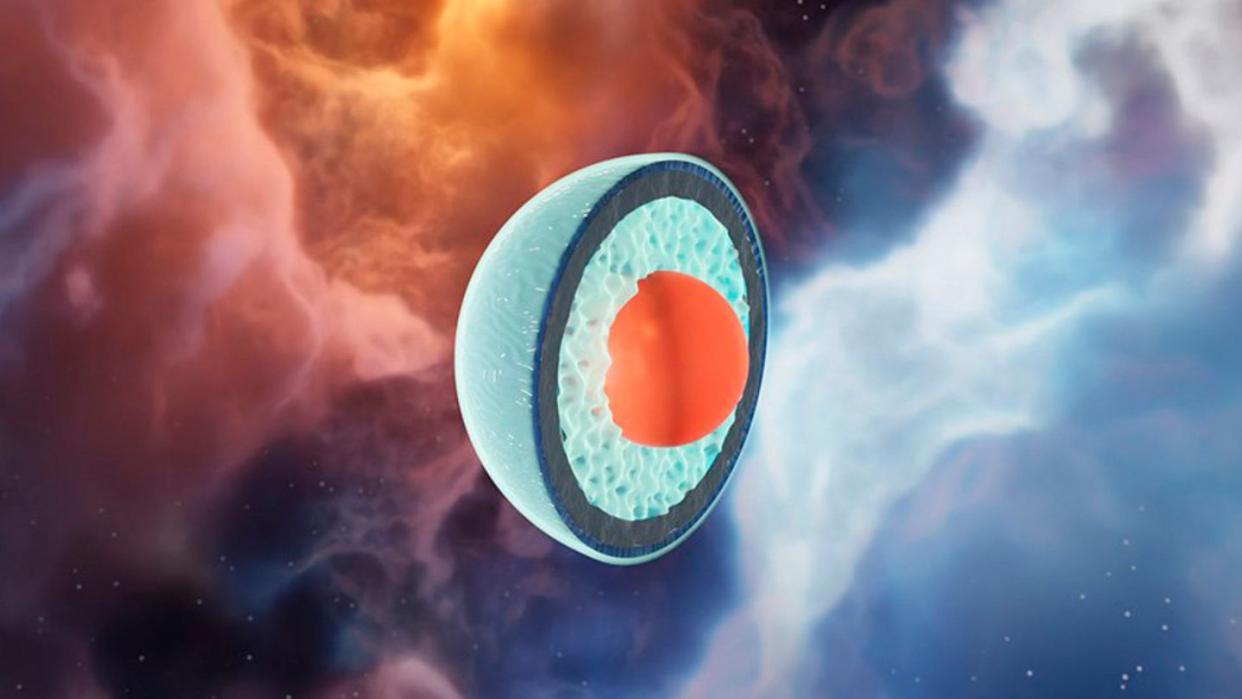A Star's Core May Conceal the Secret Ingredients of Existence

"Hearst Magazines and Yahoo may earn commission or revenue on some items through these links."
Neutron stars are one of the strangest objects in the universe—so strange that scientist can only guess what’s going on inside them.
A new study from an international team of scientists estimates that there is an 80 to 90 percent chance that the cores of massive neutron stars are made up of free-roaming quarks and gluons.
This state of matter, known as “cold quark matter,” can likely only exist in the cores of these immensely dense objects.
Nothing inspires stellar awe quite like a neutron star. Often stretching only 15 miles across, these dead, collapsed stars can contain up to 2.5 times the mass of our own Sun (which is 865,000 miles wide, by the way). This immense density and pressure creates a cosmic cauldron where particle physics gets a little wacky, and it’s in the core of this atomic soup that strange states of matter can be found.
As Universe Today explains, matter is made up of electrons, neutrons, and protons. While electrons are already a fundamental particle, neutrons and protons contain quarks. Due to the strong nuclear force—one of the four fundamental forces of nature that essentially keeps protons and neutrons together—these quarks (and the gluons that bind quarks together) can never freely exist.
…well, almost never.
According to a new study from an international team of scientists from Norway, Sweden, Germany, and the U.S., there’s an 80 to 90 percent chance that massive neutron stars—ones at least twice as massive as our Sun—likely have a core composed entirely of a matter state known as “cold quark matter” in which protons and neutrons simply don’t exist. Considering the fact that it’s impossible to directly study the core of a massive neutron star, the team instead relied on observational neutron star data from radio, X-ray, and gravitational wave observatories to gather their information. They then applied a method known as Bayesian statistics, utilizing a supercomputer to look for patterns and apply likely scenarios. The results of the work were published in mid-December in the journal Nature Communications.
“It appears that cores of quark matter are highly likely to exist,” study co-author Oleg Komoltsev, a Ph.D. candidate at the University of Stavanger in Norway, said in a press statement. “If they don't, it seems that the transition from neutron matter to quark matter must be so violent that even a small drop of quark matter would cause the neutron star to collapse into a black hole.”
A big piece of this puzzle was also answered at the Large Hadron Collider, which previously observed particles annihilating into their component parts known as quark matter. This proved, theoretically, that something similar could be happening in massive neutron stars. But the likelihood of quark matter simply existing in an environment like a neutron star instead of kickstarting the formation of a black hole was largely unknown.
“It is one of the grand questions in astrophysics whether quark matter can also be found in the cores of neutron stars,” University of Stravanger’s Aleksi Kurkela said in a press statement. “With these new results, we have clearly established that something exotic is occurring in the cores of neutron stars. What exactly it is, time will tell."
While this study suggests a strong likelihood for quark cores, the work comes with a few limitations. Right now, the sample size of neutron stars is relatively small, and scientists don’t yet know their accurate dimensions. These questions, however, will certainly be answered in time. More data will only yield better results and likely reveal that neutron stars are even stranger than we could’ve possibly imagined.
You Might Also Like

